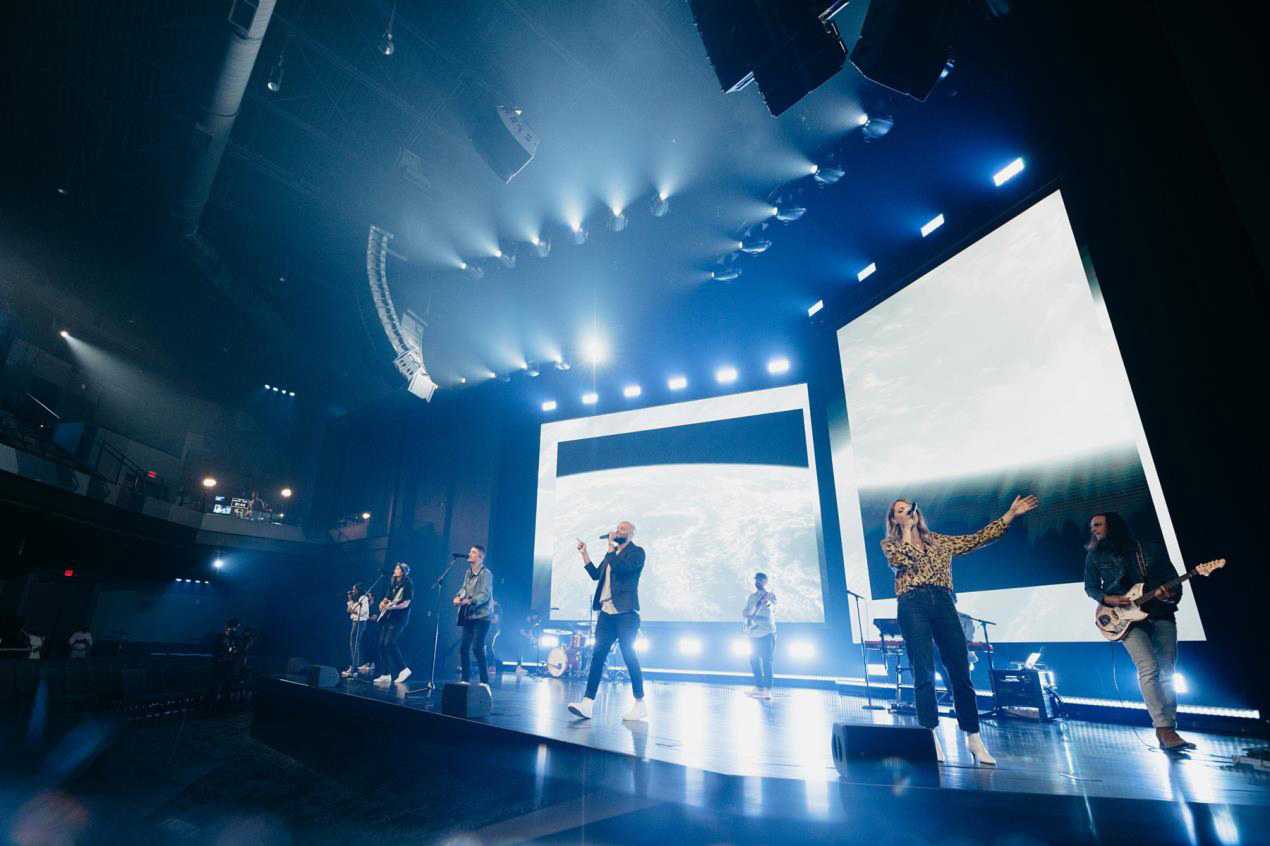L-Acoustics conquers ‘perfect storm’ at Passion City
- Details

PCC was started in Atlanta in 2008 through small gatherings in homes around the city. Public gatherings began in 2009, and the first permanent location opened at 515 Garson Drive shortly after that.
The church’s priority on creating highly participatory and high energy worship environments extends to the church’s second location in the Atlanta suburb of Cumberland, where it recently opened a new facility with a 1,400-seat auditorium. The new site, which features 180-degree seating spread between the main floor and balcony, gives every audience member an intimate visual vantage point; however, it also creates a huge challenge for sound.
“What PCC is known for is its live worship experience, which is extremely high energy, and they are also one of the most particular clients that we’ve ever worked with when it comes to the quality of their sound,” says Tim Corder, director of strategic accounts, house of worship at Diversified, the AV systems integrator the church has worked with at its two Atlanta metro locations.
“They told us that this new location had to be, quote, ‘the best-sounding room in the Southeast, if not one of the best in the entire country’. But that’s quite a challenge when the furthest seat is only 60ft away from downstage centre in a very wide, fan-shaped auditorium, plus one that’s over 40ft in height. And if you want to stay true to the adage that ‘the best sound comes from the least number of sources’, then this was truly the perfect storm for a PA system.”
Using Soundvision acoustical modelling software, this sonic “storm” was addressed with a combination of L-Acoustics speakers, with the K2 at its core. The main arrays are left and right hangs of eight K2 plus two Kara down-fills. To either side of that are left and right outfill arrays comprising five A15 Focus over one A15 Wide each, while a flown centre-fill consists of one A15 Focus over one A15 Wide.
A powerful subwoofer array has eight KS28 spread out in a linear arc under the stage, which itself is lined with six short-throw X8 coaxials spread out across the stage lip. The system is rounded out with one A15 Wide per side, flown vertically, as far out-fills and the entire setup is powered by eight LA12X and seven LA4X amplified controllers.
There is also an L-Acoustics P1 processor installed, which combines an EQ station with delay and dynamics processing and a multi-mic acoustic measurement platform with offline delay finder and EQ modelisation. The PA system is driven by the bridging of AVB, AES/EBU and analogue audio with time-aligned redundant signal distribution AVB between the P1 and the amplified controllers.
Corder concludes, “We chose L-Acoustics because of the polar stability of the products, vertically and horizontally, and the seamlessness between the arrays. That’s what I’m most proud of in this room: how consistent and excellent the sound is at every seat in what is obviously a challenging space.”
















